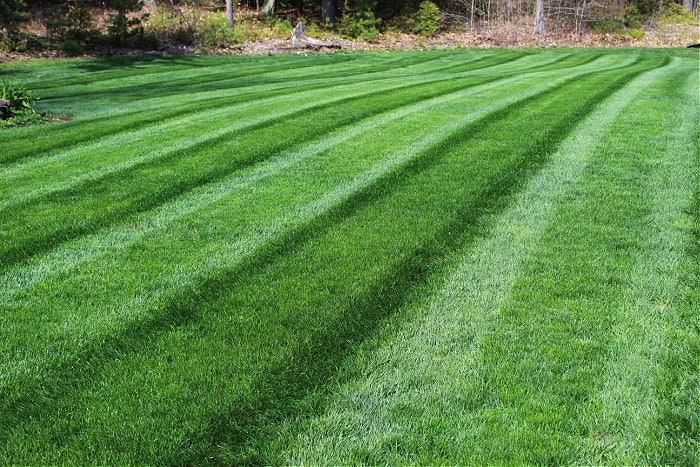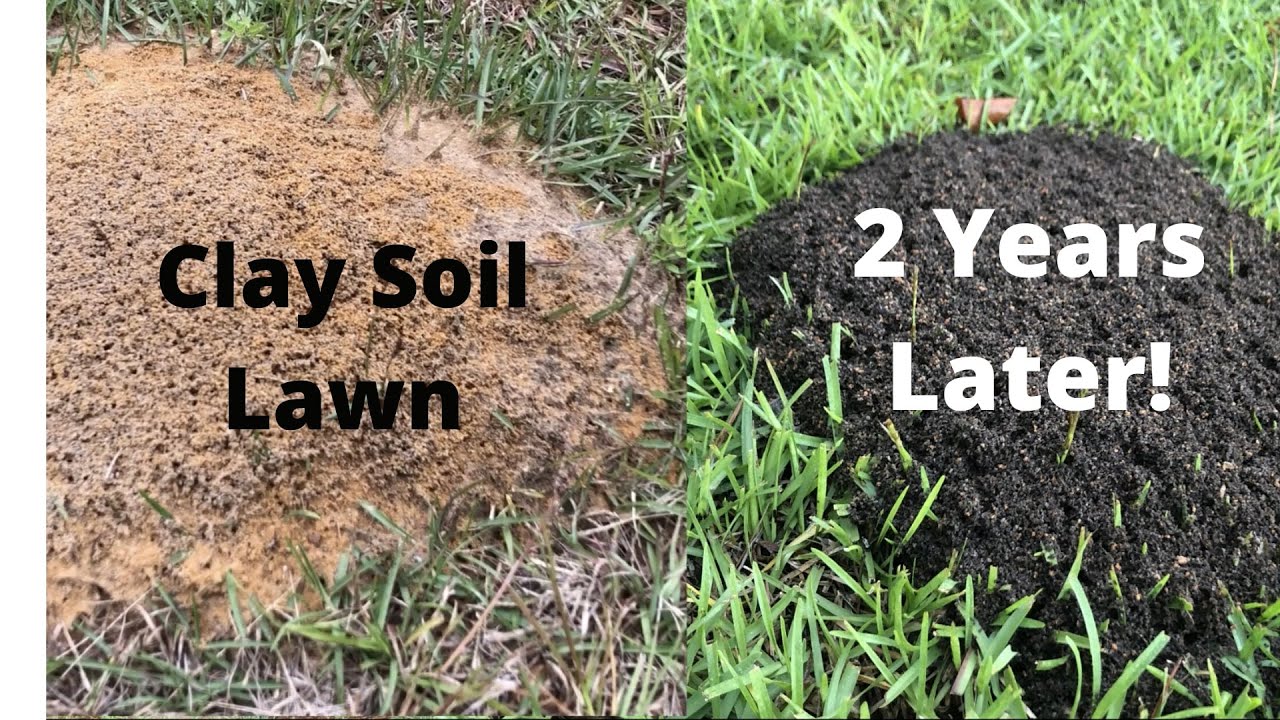To improve grass on clay soil: amend the soil with organic matter and aerate regularly. Clay soil can be improved by incorporating organic matter such as compost or peat moss, which helps to loosen the soil and improve drainage.
Aerating the soil regularly with a garden fork or aerator allows air and water to penetrate the clay, promoting root growth and overall grass health. By following these steps, you can enhance the quality of your grass and create a healthier and more vibrant lawn on clay soil.

Credit: plantforsuccess.com
Understanding The Challenges Of Clay Soil
Understanding the challenges of clay soil is crucial when trying to improve grass growth. Clay soil has unique characteristics that can hinder the health and development of grass. Common issues with grass growth in clay soil include poor drainage, compaction, and nutrient deficiencies.
To improve clay soil for optimal grass growth, it is essential to address these issues. Proper drainage can be achieved by amending the soil with organic matter such as compost or sand. Regular aeration helps reduce soil compaction, allowing air and water to reach the grass roots.
Additionally, adding fertilizers and soil conditioners helps remedy nutrient deficiencies in clay soil. By understanding the characteristics of clay soil and implementing necessary improvements, you can create a healthier environment for grass to thrive.
How to Improve Grass on Clay Soil: Step by Step Guide
Preparing Clay Soil For Grass
Preparing clay soil for grass involves assessing the soil condition and testing ph levels. Organic matter should be added to amend clay soil, improving its quality. Enhancing drainage in clay soil is crucial for grass growth. By following these guidelines, you can successfully improve the grass on clay soil.
Remember to regularly assess the soil condition, adjust ph levels, and add organic matter to aid proper drainage. With time and patience, you can transform your clay soil into a healthy and vibrant environment for lush green grass. Start by understanding the soil’s condition and implementing necessary amendments to provide optimal conditions for grass to thrive.
Improve the drainage system to prevent waterlogging, and gradually witness the transformation of your clay soil into a flourishing lawn.
Selecting Clay Soil Tolerant Grass Varieties
Selecting grass varieties that can tolerate clay soil is crucial for improving grass growth. To achieve this, consider two main types: cool-season and warm-season grasses. Cool-season grass varieties, such as fescue and kentucky bluegrass, thrive well in clay soil. They have deep root systems that aid in nutrient absorption.
On the other hand, warm-season grasses, including bermuda grass and zoysia grass, can also adapt to clay soil. These grass varieties have extensive root networks that help them withstand the challenges posed by clay soil. By choosing grass varieties that are tolerant to clay soil, you can improve the overall health and appearance of your lawn.
Remember to properly maintain and water these grasses to ensure their long-term success.
Factors To Consider When Choosing Grass Varieties
Factors to consider when choosing grass varieties for improving grass on clay soil are sunlight requirements, watering and irrigation needs, drought tolerance, and traffic tolerance. Sunlight requirements vary for different grass varieties, so it is important to choose one that matches the amount of sunlight your lawn receives.
Watering and irrigation needs should also be taken into account, as some grasses require more water than others. Drought tolerance is crucial, especially in areas where water scarcity is a concern. Choose grass varieties that can withstand periods of drought without withering or dying.
Lastly, consider the traffic tolerance of the grass varieties you are considering. If you have a high foot traffic area, it is important to select a grass variety that can tolerate heavy use. By considering these factors, you can choose the right grass varieties to improve the quality of your lawn on clay soil.
Preparing The Soil For Seeding Or Sodding
Preparing the soil for seeding or sodding requires clearing the area, loosening compacted clay soil, and leveling the surface. To ensure successful grass growth on clay soil, it is crucial to remove any existing vegetation from the area. After clearing, loosening the compacted clay soil will help improve drainage and promote root penetration.
This can be achieved by tilling the soil or using a garden fork to break up the compacted layers. Finally, leveling the surface will provide an even base for the grass seed or sod. This can be done by raking the soil or using a lawn roller.
By following these steps, you can effectively improve the grass on clay soil.
Seeding Grass On Clay Soil
Seeding grass on clay soil requires careful seed selection and preparation, ensuring the right type of grass is chosen for optimal growth. Sowing techniques like shallow burial and proper spacing promote successful germination. Watering newly seeded grass is crucial, providing consistent moisture without over saturating the soil.

Fertilizing the grass helps to enhance root development and strengthen the overall health of the grass. By following these steps, you can improve the grass on clay soil and create a lush and vibrant lawn.
Sodding Grass On Clay Soil
Sodding grass on clay soil can greatly improve the overall quality of your lawn. The first step is to buy high-quality sod from a reputable supplier. Once you have your sod, it’s important to properly install it, ensuring that the roots make good contact with the soil.
Adequate watering is crucial for the health of your newly installed sod. Be sure to water deeply and frequently, keeping the soil consistently moist. Caring for your sod also involves regular mowing and fertilizing, following a proper maintenance schedule. By following these guidelines, you can successfully improve the grass on clay soil, resulting in a lush and vibrant lawn.
Essential Lawn Care Practices For Clay Soil
To improve grass on clay soil, essential lawn care practices should be implemented. Mowing tips for clay soil include cutting the grass at the appropriate height and frequency. Aeration and dethatching techniques help to alleviate compaction and promote air circulation.
Fertilizing clay soil with the right nutrients and organic matter can enhance its fertility. It is important to follow watering guidelines for clay soil, ensuring that it receives adequate moisture without becoming saturated. By adhering to these practices, you can improve the quality and health of your grass on clay soil.
Remember, it’s crucial to maintain the right balance of care and attention for optimal results.
Frequently Asked Questions For How To Improve Grass On Clay Soil
How Can I Improve Grass Growth On Clay Soil?
To improve grass growth on clay soil, amend the soil with organic matter such as compost or peat moss to improve drainage and provide nutrients. Breaking up the soil with aeration and overseeding with grass varieties that are well-suited to clay soil can also help promote healthy grass growth.
What Type Of Grass Is Best For Clay Soil?
When dealing with clay soil, it’s best to choose grass varieties that are known for their tolerance to heavy soil. Cool-season grasses like kentucky bluegrass and tall fescue are usually the best choices for clay soil due to their deep root systems and ability to withstand compacted soil conditions.

How Often Should I Water Grass On Clay Soil?
Clay soil tends to retain water, so it’s important not to overwater. Generally, watering clay soil once or twice a week with about an inch of water is sufficient. However, it’s always best to check the moisture level by sticking your finger into the soil and only water when the top inch feels dry.
Conclusion
Improving grass on clay soil can be a challenging task, but with the right knowledge and techniques, it is definitely achievable. By implementing the steps discussed in this blog post, you can transform your clay soil into a healthy and vibrant lawn.
Remember to start by properly preparing your soil, amending it with organic matter, and ensuring proper drainage. Choosing the right grass seed that is suitable for clay soil conditions is also crucial. Regular fertilization, watering, and mowing practices will help maintain the health of your grass.
It is also important to be patient and persistent, as it may take some time for the improvements to show. By following these tips and being consistent with your lawn care routine, you can enjoy a beautiful and thriving grass lawn, even on clay soil.

